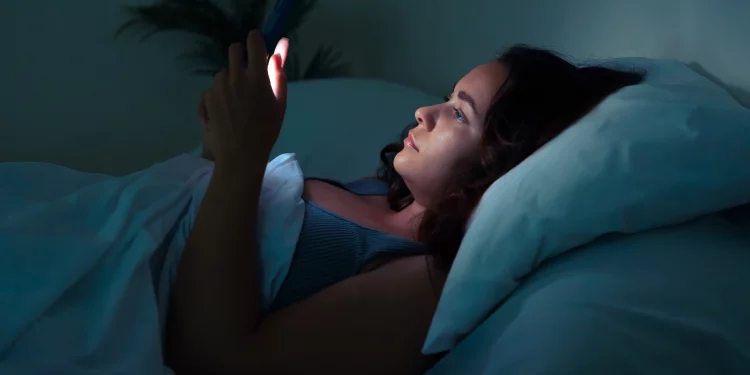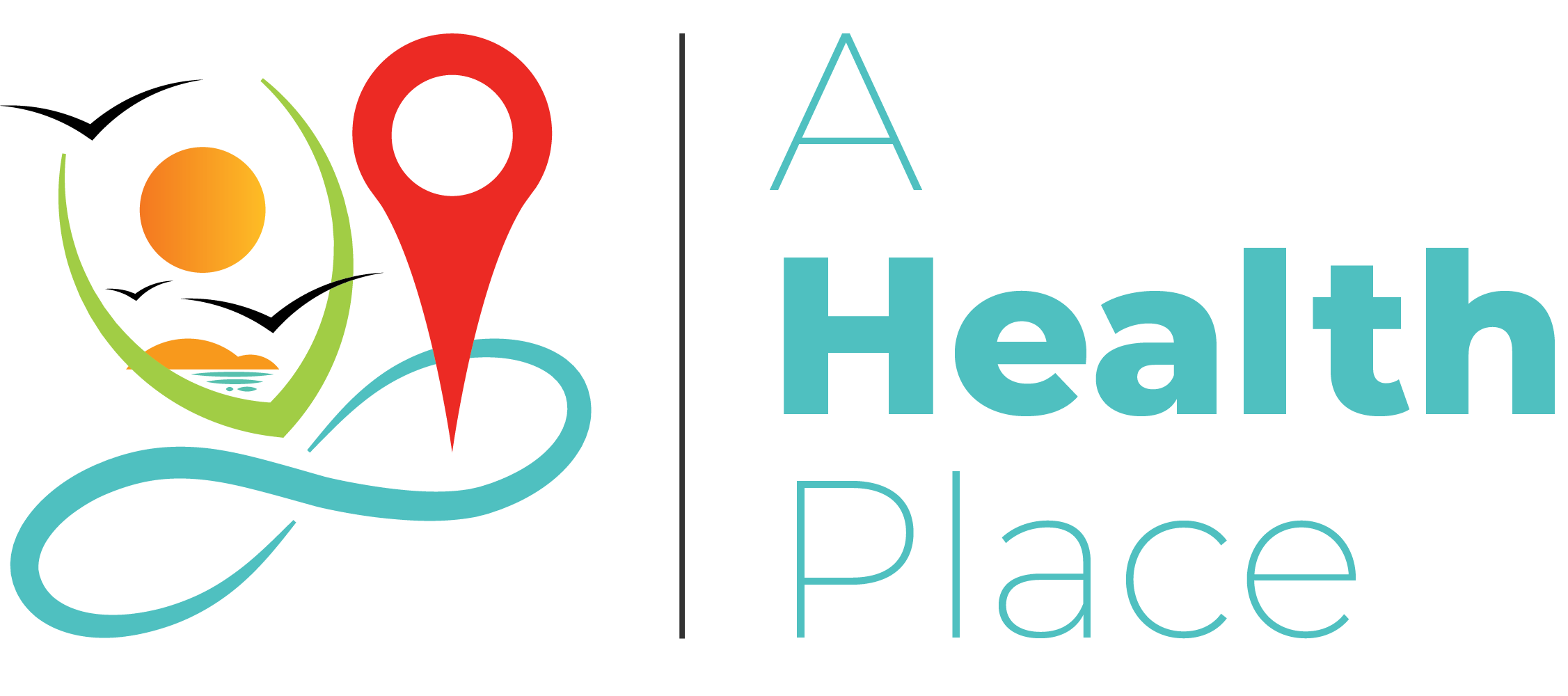It’s midnight, and you’re still scrolling through your phone. One more video, one more post—before you know it, an hour has passed. You finally put your phone down, but sleep doesn’t come easily. You toss and turn, your mind buzzing with everything you just consumed. Sound familiar?
Millions of people struggle with sleep, and the culprit is often blue light—the artificial light emitted by screens. From smartphones to laptops and TVs, our reliance on digital devices has skyrocketed, disrupting natural sleep cycles and leading to chronic sleep deprivation.
In this article, we’ll explore how blue light affects your sleep, the science behind it, and practical solutions to minimize its impact. With sleep disorders on the rise, it’s crucial to understand how modern technology is interfering with our ability to rest and recharge.
What is Blue Light and Where Does It Come From?
Blue light is a high-energy, short-wavelength light found in sunlight and artificial sources. While exposure to natural blue light during the day is beneficial for alertness and mood, excessive exposure at night suppresses melatonin production, making it harder to fall and stay asleep.
Common Sources of Blue Light
- Smartphones & Tablets – Used for social media, streaming, and messaging.
- Laptops & Computers – Essential for work, entertainment, and gaming.
- LED & Fluorescent Lights – Common in homes and offices.
- TV Screens – A popular pre-bedtime habit for many.
With screen time at an all-time high, the average American spends over 7 hours daily on digital devices, leading to excessive nighttime blue light exposure.
The Science Behind Blue Light and Sleep Disruption
Your body operates on a circadian rhythm, a 24-hour internal clock that regulates sleep and wakefulness. Natural sunlight helps keep this rhythm in sync, but artificial blue light tricks the brain into thinking it’s daytime, disrupting sleep patterns.
When exposed to blue light before bed:
- Melatonin levels drop, making it harder to fall asleep.
- Sleep latency increases, meaning you take longer to doze off.
- REM sleep is shortened, reducing the quality of rest.
A 2023 study by Harvard Medical School found that people who used screens 30 minutes before bed took 60% longer to fall asleep and had poorer sleep quality compared to those who avoided screens.
The Role of Melatonin Suppression
Melatonin, the sleep hormone, signals your body to wind down. Blue light exposure blocks melatonin release, delaying sleep onset and reducing deep sleep phases. This results in grogginess, low energy, and difficulty focusing the next day.
A study published in The Journal of Clinical Endocrinology & Metabolism found that blue light exposure at night suppressed melatonin production by up to 85%, making it one of the leading causes of modern sleep disorders.
How Blue Light is Impacting Everyday Sleep Habits
The Night Owl’s Struggle
Emily, a 28-year-old graphic designer, spends hours working on her laptop, followed by social media scrolling before bed. She often sleeps past midnight and wakes up exhausted, relying on coffee to get through the day.
Over time, her insomnia worsens, affecting her productivity and mood. Like many others, Emily unknowingly suffers from technology-induced sleep deprivation, a growing problem in today’s digital world.
Screen Time and Insomnia
A 2024 survey by the National Sleep Foundation found that over 50% of Americans use their phones in bed, with many reporting difficulty falling asleep and staying asleep.
- Teenagers who use screens before bed get 1.5 hours less sleep on average.
- Adults who binge-watch TV at night have a 23% higher risk of chronic sleep deprivation.
- Gamers who play at night experience more delayed sleep onset due to blue light exposure and increased brain stimulation.
The Long-Term Effects of Blue Light on Health
1. Increased Risk of Sleep Disorders
Chronic exposure to blue light at night can lead to insomnia, sleep apnea, and circadian rhythm disorders. The American Academy of Sleep Medicine warns that persistent sleep disruption increases the risk of heart disease, obesity, and diabetes.
2. Digital Eye Strain & Fatigue
Prolonged screen exposure leads to digital eye strain, causing dry eyes, headaches, and blurred vision. A 2023 study found that blue light filters can reduce digital eye strain symptoms by 50%, yet most people still do not use them.
3. Impaired Cognitive Function
Lack of sleep due to blue light exposure affects memory, concentration, and problem-solving skills. Sleep-deprived individuals perform 20-30% worse on cognitive tasks, similar to alcohol impairment.
4. Increased Risk of Depression & Anxiety
Studies show that excessive nighttime screen time is linked to higher rates of anxiety and depression. Sleep deprivation disrupts mood-regulating hormones, leading to stress, irritability, and emotional instability.
Facts About Blue Light & Sleep
- Melatonin suppression – Blue light exposure before bed can suppress melatonin production by up to 85%, delaying sleep onset. (The Journal of Clinical Endocrinology & Metabolism)
- Longer time to fall asleep – People who use screens within 30 minutes of bedtime take 60% longer to fall asleep. (Harvard Medical School, 2023)
- Reduced sleep duration – Teenagers who use screens before bed sleep 1.5 hours less on average than those who don’t. (National Sleep Foundation, 2024)
- Increased risk of obesity – Chronic sleep disruption due to blue light exposure is linked to a 23% higher risk of obesity. (American Journal of Clinical Nutrition)
- Digital eye strain – Staring at screens for prolonged periods can cause dry eyes, headaches, and blurred vision, impacting sleep quality. (American Optometric Association)
- Cognitive impairment – Sleep-deprived individuals perform 20-30% worse on cognitive tasks, similar to alcohol impairment. (Sleep Research Society)
- Gaming & sleep delay – Late-night gaming can increase sleep latency by up to 40 minutes, reducing deep sleep. (Sleep Medicine Journal, 2023)
- Children and blue light – Kids exposed to screens before bedtime have double the risk of developing sleep disorders. (Pediatrics Journal)
- Binge-watching effect – Watching multiple episodes of a show before bed can reduce REM sleep by 20%, leading to next-day fatigue. (University of Michigan, 2024)
- Night mode isn’t enough – While “Night Mode” reduces blue light, it only lowers melatonin suppression by 10-15%, meaning it’s not a complete solution. (Stanford Sleep Center)
How to Reduce Blue Light Exposure and Improve Sleep
1. Limit Screen Time Before Bed
Aim to stop using screens at least one hour before bedtime. Instead, opt for reading a book, journaling, or meditating to help your brain unwind naturally.
2. Use Blue Light Filters
Most devices now offer Night Mode or Blue Light Filter settings, reducing blue light emission. Studies show that these filters improve sleep quality by 25% when used consistently.
3. Invest in Blue Light Blocking Glasses
Blue light blocking glasses can reduce melatonin suppression by up to 80%, helping protect sleep cycles without limiting screen time.
4. Adjust Bedroom Lighting
Use warm, dim lighting instead of LED or fluorescent lights in the evening. Smart bulbs with adjustable color temperatures can mimic natural light, supporting better sleep.
5. Prioritize Morning Sunlight Exposure
Getting 10-15 minutes of natural sunlight in the morning helps regulate circadian rhythms, counteracting the effects of blue light exposure at night.
6. Establish a Tech-Free Bedtime Routine
Develop pre-sleep habits that don’t involve screens, such as:
- Reading a physical book
- Practicing deep breathing exercises
- Listening to calming music or a sleep podcast
- Using essential oils like lavender for relaxation
7. Consider Blue Light-Free Devices
E-ink devices like Kindle Paperwhite emit minimal blue light, making them a better alternative for nighttime reading. Future innovations may include screen technology that automatically adjusts light exposure based on time of day.
The Future of Blue Light & Sleep Research
With sleep disorders increasing, researchers are exploring innovative ways to reduce technology-induced sleep disruption.
AI-Powered Sleep Solutions
Companies like Apple and Google are integrating AI-based sleep tracking into their devices, helping users monitor sleep patterns and optimize screen use. Future advancements may include smart glasses that filter blue light in real-time.
Blue Light Conscious Design
Tech companies are developing low-blue-light screens, reducing exposure without affecting screen clarity. Samsung and Dell have already introduced monitors with built-in blue light reduction.
Melatonin-Boosting Technologies
New developments in smart lighting systems aim to adjust color temperature throughout the day, mimicking natural sunlight exposure and reducing the effects of artificial blue light.
Protect Your Sleep: Take Control of Blue Light Exposure
In an era dominated by screens, blue light exposure has become a leading cause of sleep disruption. From suppressing melatonin to delaying sleep onset, excessive screen use at night interferes with the body’s natural rhythms, leading to chronic sleep deprivation, impaired cognition, and long-term health risks.
By making small, intentional changes—such as limiting screen time before bed, using blue light filters, and adopting a tech-free bedtime routine—you can protect your sleep and improve overall well-being. As technology evolves, future solutions may offer better ways to balance digital convenience with healthy sleep habits.
Tonight, take the first step. Put your phone away, dim the lights, and give your body the rest it deserves.
Struggling with sleep due to screen time? Start by reducing blue light exposure tonight. Share your experience in the comments or subscribe for more sleep health insights.
Disclaimer: This article is for informational purposes only and not medical advice. Consult a healthcare professional before making any health decisions; the publisher does not guarantee the accuracy or completeness of the content.









